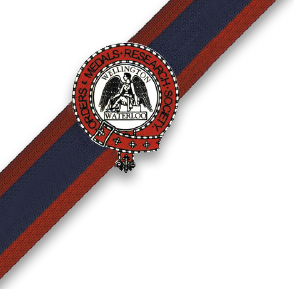Articles for publication in the Journal
The articles submitted by the members of the Society are the life blood of the Journal without which it could not survive. The Editorial Team welcomes offerings from all members, whether they are first-time, occasional or regular contributors, that is their original research on any topic related to orders, medals and decorations. This is the only requirement, since the Journal is not a general military history publication.
Articles can be as long or as short as the author wishes but particularly long articles may be shortened, or split into two or more parts by the Editorial Team. However, it should be noted that the Journal is limited to 92 pages (due to it being stapled) and this enables us to include some 26,000 – 28,000 words of medal-related articles. We like to include some 10 to 13 articles in each Journal (in order to give everyone ‘a fair bite at the cherry’) and so the average length of an article is around 2,500 words. Obviously, some are longer and some are shorter but we very rarely publish a “man behind the medal” article of more than 3,000-3,500 words (less is often more). Longer medal rolls will be published on the Society’s website rather than in the Journal.
Articles should be submitted to the Editorial Team preferably as email attachments (Microsoft Word files with separate JPEG files for each image) to: editor@omrs.org or by post (on CD) to: The OMRS Editorial Team, PO Box 612, Walton-on-Thames, Surrey, KT12 9FQ. Please note that, unfortunately, handwritten contributions cannot be accepted.
Contributors are asked to obtain permission to use, or quote from, material which is subject to copyright or previously published, either in print or on the internet, before submitting their article for consideration. This requirement applies particularly to drawings, photographs, paintings and the like to be used as illustrations, although a simple acknowledgement of the source is usually sufficient – as a matter of course all sources should be noted in the text or at the end in ‘notes’ or ‘sources’. The Editorial Team are always happy to offer advice on this.
Accepted articles will be edited by the Editorial Team and put into the style, layout and format used in the Journal. It would help the team greatly if contributors would please note the following:
Typography
Do not double space the text. Use only one space after a full stop.
Names: If a person’s rank and forename are known, give them in full in the first instance (e.g. Captain Donald Smith) in preference to initials but thereafter they can be abbreviated (e.g. Capt D. Smith).
Emphasis: Only when essential, then use italics, not bold and not capital letters.
Italics: Use for foreign phrases, titles of publications and names of ships
Titles of Articles
Keep titles short – avoid providing a synopsis of the article in the title!
Medal Descriptions
Naming on medals: Show exactly as it appears. If it is named in capitals, then use capitals.
Abbreviations
If an abbreviation is going to be used, spell out the name in full the first time with the abbreviation in brackets. Hence for a first mention of say ‘the 1st Battalion the King’s African Rifles (1 KAR)’ and afterwards just use ‘1 KAR’ or ‘Distinguished Flying Cross (DFC)’ use DFC thereafter.
Dates, Times and Numbers
Dates: Should be shown as 24 September 1967 / Sunday, 24 September 1967 (not 24.9.1967).
Times: Either the 12-hour or 24-hour clock format can be used. However, once decided, stick to the same format throughout the article (except in quotations if the alternative is used).
For the 12-hour clock, use the form 4.20am or 6.45pm and, if on the hour, without zeros as 4am or 6pm.
For the 24-hour format, use 0800hrs or 1950hrs.
Numbers: Use letters for numbers from one to ten in the text and Arabic numerals for 11 upwards except for the first word of a sentence.
Quotations
Where sections of text, long or short, are direct (verbatim) quotations from published material, ensure that they are exactly the same as the original source text; do not change or correct archaic or ungrammatical (according to modern usage) words, phrases, spelling or punctuation. If the word or phrase looks very strange or even wrong, then insert the word ‘sic’ in square brackets immediately after it to show that the oddity has been noted.
References and Notes
References: References should appear at the end of each article. Published references and sources should include the title of the publication, name(s) of the author(s), publisher’s name and year of publication, if known.
Notes: Notes should not be ‘embedded’ in the article. Rather the positions of all notes should be numbered in superscript in the text and then all the numbered notes should be placed at the end of the article.
Miscellaneous
Photographs: Should not be embedded within text documents but should always be submitted as separate image files to the article (one JPEG file per illustration), or as hard copies for scanning. Please note that the Editorial Team cannot be responsible for the safety of original photographs and contributors should submit copies or email scanned copies.
Images should ideally have a resolution of at least 300DPI at publication size to ensure good quality reproduction.
Spelling: Except for proper names (e.g. US Department of Defence) the Journal uses British/Commonwealth spelling. All spelling should be thoroughly checked before submission of articles

